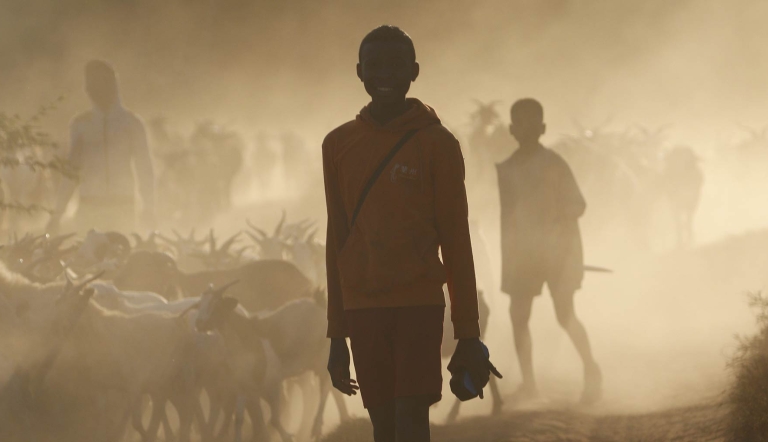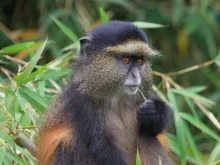When thinking about conservation, it’s easy to assume that land must be devoid of human presence in order to thrive. But this isn’t unilaterally true.
Yes, certain human presence degrades the environment – like mining, deforesting, and littering – but this viewpoint doesn’t take into account the presence of indigenous peoples who have successfully sustained the land over centuries of co-existence.
Conservation, therefore, does not concern the environment alone. Environmental issues are inextricably linked with local residents, particularly the indigenous communities who steward the land. This distinction is echoed in ecotourism: responsible travel must benefit the environment and its inhabitants alike.
So what is the relationship between the natural world and indigenous peoples, and how can travelers ensure their presence contributes positively to both?
 Photo by Corrado Scropetta
Photo by Corrado Scropetta
The real value of land
Before you travel abroad, it’s important to understand the social history of the place you’re visiting. Nearly every destination in Africa, the Americas, and the Pacific is home to indigenous communities that lived there long before European settlers arrived. It may be uncomfortable for Western travelers to confront, but these countries have a complicated past of colonization and subjugating native people, the legacies of which can still be witnessed today. If you’re visiting, do some research beforehand. What indigenous communities still live there today? What is the relationship between the government and indigenous or native communities living there?
Typically, land has always been at the center of conflicts between indigenous peoples and infringing outsiders, which means that modern questions of conservation have deep roots in political strife and cultural anguish. Who owns the land? Who has the right to live there? What capital can the land generate? Colonial-era emphasis on monetizing natural resources still lingers in world governments today, resulting in a singular pursuit of industries that harm ecosystems, whether through agriculture, mining, logging, drilling, or even tourism. Ultimately, this can damage not just the environment, but also the cultures and communities living within these ecosystems.
 Photo by Dion Crushshon
Photo by Dion Crushshon
Land rights are indigenous rights
Today, indigenous lands and waters represent 80% of the planet’s biodiversity, which means that the rights of native land and native people are nearly synonymous. For many native communities, this stewardship of the environment is part of their cultural heritage, going hand-in-hand with an identity as protectors of their ancestral lands. However, indigenous perspectives are often missing from modern conservation efforts, even those that are well-intentioned.
There is hope, though, on large and small scales. In 2007, the United Nations officially adopted the Declaration on the Rights of Indigenous Peoples to enshrine the individual freedoms of indigenous peoples around the world, including rights such as self-determination and self-governance. Forward-thinking non-profit organizations are turning their focus onto sustainable development in indigenous communities. The Nature Conservancy, for example, works in partnership with indigenous peoples in the Amazon to foster indigenous leadership in local conservation projects – and in 2019, collaborated with Holbrook Travel to bring donors to Brazil to witness the initiative’s impact firsthand.
Legal victories for indigenous rights are also having impact; last year, the Ecuadorian Amazon’s Waorani won a historic lawsuit against the government to prevent part of their land from auction for oil drilling. This year, the CEIBO Alliance, of which the Waorani are members, alongside three other indigenous groups from Ecuador, Peru, and Colombia, won the UN’s Equator Prize for their advocacy. Nemonte Nenquimo, Waorani co-founder of the CEIBO Alliance, was named to Time’s 100 Most Influential People of 2020.
 Photo by Pelin Karaca
Photo by Pelin Karaca
How travelers can make a positive difference
When traveling, you have a few opportunities to contribute positively to indigenous cultures and areas in your destination. Look for ways that your tourist dollar can support local indigenous communities directly. Locally-owned initiatives are always the best choice, and if you are supporting non-native organizations, make sure they are transparent about their financial distribution to local residents. Take advantage of resources like the Center for Responsible Travel (CREST), which conducts research that can help provide options for the socially-conscious traveler – including specific projects devoted to indigenous tourism.
Unfortunately, some “cultural experiences” touted by travel companies are more like performances than authentic interactions. While it’s important to be respectful during your visits to indigenous communities, be mindful of the fact that you are not a spectator behind glass, and these communities are not exhibits in a museum. You are guests in their ancestral home, so choose excursions and activities that enact that value and behave accordingly.
Finally, keep an eye on your biases as you explore different cultural contexts and interact with indigenous people on your travels. Consider the cultural, social, and political history of your destination, and how your own context affects your point of view. Most of all, be open to listening, learning and self-reflection as you engage with indigenous perspectives unfamiliar to your own. The best course of action, at home or abroad, is to amplify indigenous voices in the pursuit of their rights.
Further reading
United Nations Declaration on the Rights of Indigenous Peoples
Center for Responsible Travel indigenous tourism projects
Celebrating indigenous peoples as nature’s stewards
Article: How Conservation Became Colonialism
Article: An Uncommon Victory for an Indigenous Tribe in the Amazon
Article: Indigenous peoples defend Earth's biodiversity—but they're in danger
Article: Community-based wildlife conservation is bringing success to Tanzania












